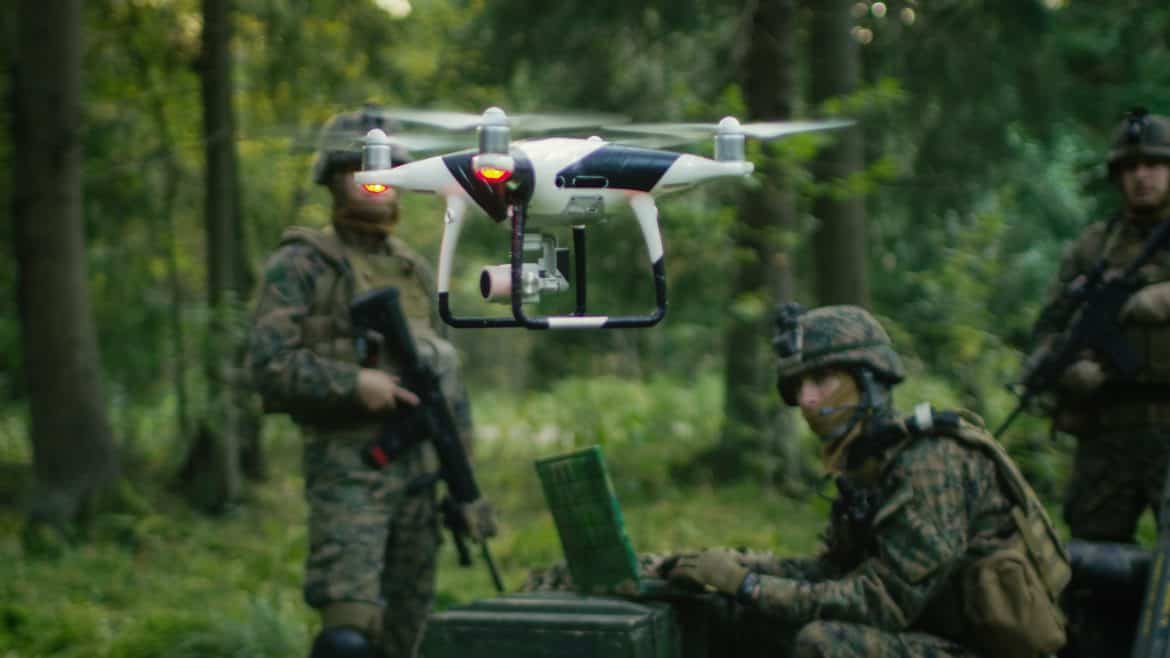
As early as the 19th century CE military aviators attached bombs and cameras to balloons, though being at the mercy of the wind, these were not really piloted.
Nikola Tesla made a working prototype of a remote-radio-controlled boat in 1898 CE; 18 years later the principle was applied to aircraft.
Several air forces experimented with target practice drones, guided missiles and remotely piloted aircraft during the world wars and interwar period.
Drones really came into their own in 1964 CE, during the Vietnam War,
when the US Air Force had them fly tens of thousands of reconnaissance missions.
Since then drones have evolved.
In 1982 CE Israel used them to fool Syrian anti-aircraft defenses;
in 1995 CE the US Air Force introduced the MQ-1 Predator, the first true attack drone.
Current drones are not yet capable of defeating enemy aircraft in dogfights, though they have the potential to do so,
being able to withstand much larger g-forces.
But drones beat traditional human-controlled aircraft in a different way, by making them obsolete.
The War in the Ukraine has shown that hordes of drones
are as good as, or better than conventional aircraft
in scouting, artillery targeting and bombing, engaging targets as large as buildings to as small as individual vehicles or soldiers.
They dominate the skies at low and medium altitudes and are orders of magnitude cheaper and more cost-effective.
Drones range from small machines weighing a few kilograms with limited range to full airplanes.
Some can fly for half an hour; others penetrate hundreds of kilometers into enemy airspace.
Some operate alone, others in swarms.
Attack drones, unlike cruise missiles, can hover over a target area,
giving the operator and his superiors time to choose a target and decide whether to attack it or not.
Unlike traditional artillery, which fires at pre-selected targets, drones can hunt for them.
They often act as tactical eyes and ears and even act as morale boosters by sending live camera feeds of successful attacks.
This capability is envisioned to expand in the future, with some spy drones becoming as small as insects.
Drones have revolutionized the battlefield, degrading the threat of armored vehicles and ships in favor of cheap expendable machines like themselves.
They have largely removed the element of surprise from the battlefield, reducing the advantages of mobile warfare.
Especially small cheap FPV attack drones have become very popular, though they have their limitations: general unreliability, susceptibility to jamming or entangled optical fibers, inaccuracy, small payload.
The emphasis on the battlefield is shifting towards drones themselves and anti-drone weaponry.
Advanced air defense systems can often spot and shoot down drones before they become a threat, but these systems are more expensive than the drones themselves.
The drones seem to be evolving along the same lines as conventional aircraft, which means that drone-to-drone air combat will become more common in the future.
Already some aerial drones are equipped with guns and air-to-air missiles.
War Matrix - Aerial drone
Cold War 1945 CE - 1991 CE, Weapons and technology


